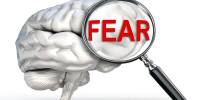Attention deficit hyperactivity disorder (ADHD) is a complex mental health disorder that is diagnosed based on a combination of symptoms, including difficulty paying attention, impulsivity, and hyperactivity. These symptoms can be evaluated by a trained mental health professional through a comprehensive evaluation that includes a clinical interview, observation, and possibly psychological testing.
While virtual reality technology has the potential to be used as a tool in mental health treatment, it is not currently a reliable method for diagnosing ADHD or any other mental health disorder. If you are concerned that you or a loved one may have ADHD, it is important to speak with a mental health professional for a proper evaluation and treatment.
A virtual reality game provides an objective evaluation of attention deficit disorders and may lead to a more effective therapeutic approach. Researchers demonstrated that differences in eye movements can be used to detect ADHD using virtual reality games, eye tracking, and machine learning, potentially providing a tool for more precise diagnosis of attention deficits. Their method could also be used as the foundation for ADHD treatment and, with some modifications, to evaluate other conditions such as autism.
We tracked children’s natural eye movements as they performed different tasks in a virtual reality game, and this proved to be an effective way of detecting ADHD symptoms. The ADHD children’s gaze paused longer on different objects in the environment, and their gaze jumped faster and more often from one spot to another.
Liya Merzon
ADHD is a common attention disorder that affects approximately 6% of all children worldwide. Despite decades of research into objective markers, ADHD is still diagnosed through questionnaires, interviews, and subjective observation. The outcomes can be ambiguous, and standard behavioral tests do not reveal how children deal with everyday situations. A team of researchers from Aalto University, the University of Helsinki, and bo Akademi University recently developed EPELI, a virtual reality game that can be used to assess ADHD symptoms in children by simulating real-life situations.
Now, the team tracked the eye movements of children in a virtual reality game and used machine learning to look for differences in children with ADHD. The new study involved 37 children diagnosed with ADHD and 36 children in a control group. The children played EPELI and a second game, Shoot the Target, in which the player is instructed to locate objects in the environment and “shoot” them by looking at them.
‘We tracked children’s natural eye movements as they performed different tasks in a virtual reality game, and this proved to be an effective way of detecting ADHD symptoms. The ADHD children’s gaze paused longer on different objects in the environment, and their gaze jumped faster and more often from one spot to another. This might indicate a delay in visual system development and poorer information processing than other children,’ said Liya Merzon, a doctoral researcher at Aalto University.

Brushing your teeth with distractions
Project lead Juha Salmitaival, an Academy Research Fellow at Aalto, explains that part of the game’s strength is its motivational value. ‘This isn’t just a new technology to objectively assess ADHD symptoms. Children also find the game more interesting than standard neuropsychological tests,’ he says.
Salmitaival conceived EPELI together with Professor Matti Laine from Åbo Akademi University and Erik Seesjärvi, a doctoral researcher at the University of Helsinki and clinical neuropsychologist at Helsinki University Hospital (HUH). The game is available to neuropsychologists working in pediatric neurology and pediatric psychiatry at HUH.
‘Those who are interested can use EPELI as an aid in their clinical work,’ says Seesjärvi. ‘The experience has been very positive. All of the neuropsychologists who answered a feedback survey after the first pilot said they had benefit from using virtual reality methods as a complementary tool in their work.’
EPELI game development was led by Topi Siro, an Aalto alum who now works at Peili Vision Oy. ‘The game provides a list of tasks that simulate everyday life, such as brushing your teeth and eating a banana. The player has to remember the tasks despite distractions in the environment, such as a TV being on. The game measures everything: how much the child clicks on the controls and how efficiently they perform the tasks. Efficiency correlates with everyday functioning, whereas children with ADHD often have challenges,’ says Siro.
Motivation for rehabilitation
The researchers envision broader therapeutic applications for virtual reality games. Beyond assessing symptoms, gaming could also be used as an aid to ADHD rehabilitation. ‘We want to develop a gamification-based digital therapy that can help children with ADHD get excited about doing things they wouldn’t otherwise do. There’s already an approved game for ADHD rehabilitation in the US,’ says Salmitaival. The team is exploring rehabilitation possibilities in a project with researchers at the University of Oulu.
Linda Henriksson, a senior lecturer at Aalto University who was also involved in the study, notes the exceptional potential of virtual reality for such applications. ‘I see virtual reality as an interesting tool, because it can be used to precisely control what happens in the stimulus world while at the same time collecting information about behaviour in a natural situation,’ says Henriksson, an expert in how the brain processes visual information.
Researchers have already identified other potential applications for EPELI in assessing a wide range of difficulties with everyday challenges. For example, it could be used to measure problems in the planning and flexibility of activities in people with autism. With modifications, this approach could also be used to assess language problems, brain trauma, adult ADHD, symptoms related to cerebral palsy and even the deterioration of memory with age. ‘Our partners in Geneva are studying aging-related diseases. Key opportunities on the horizon include early detection of Parkinson’s and Alzheimer’s diseases,’ says Salmitaival.
















